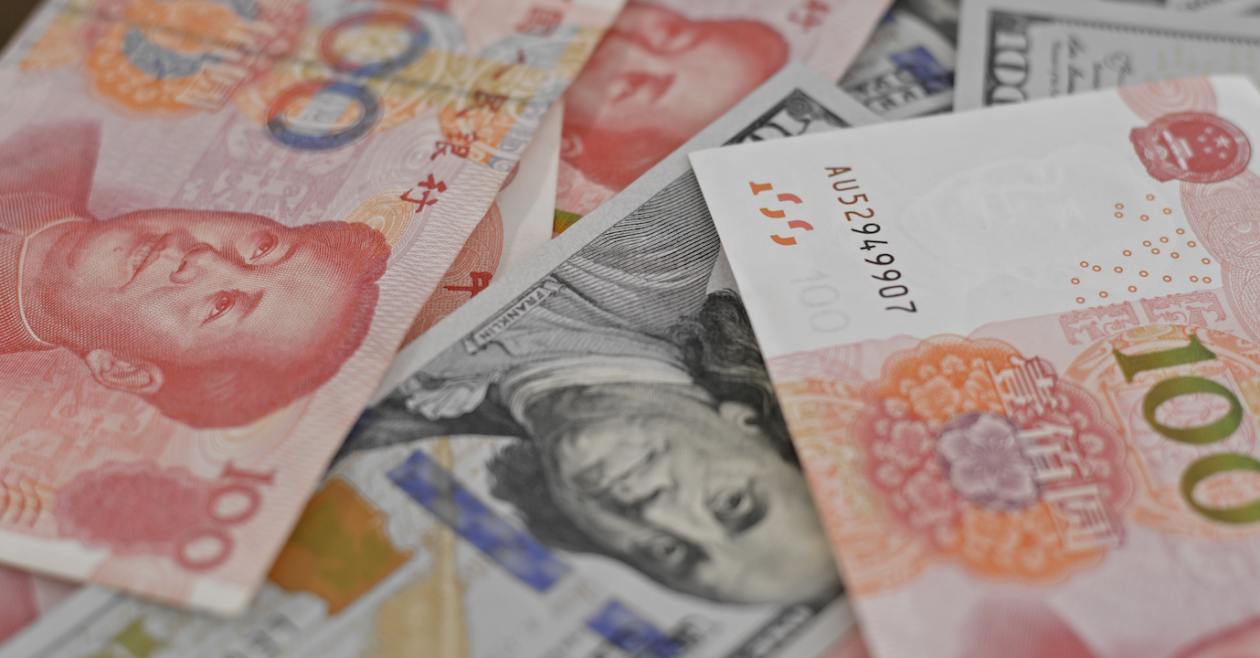China may be one step closer to its goal of internationalizing the yuan, with an expert from the Export–Import Bank of China (Exim), a state-owned policy bank, saying that e-CNY, the country’s upcoming digital currency, can be used overseas for payments and has strong international competitiveness. However, experts have mixed feelings about how much impact the digital yuan can have on challenging the U.S. dollar dominance.
Liu Yihua, a deputy director of the marketing policy guidance division at Exim and a researcher at Taihe Institute, said the-CNY can be used overseas, according to a report published earlier this week by Russian state news agency Sputnik.
Specifically, Liu said from a technical perspective, there’s no major difference among domestic, cross-border or offshore e-CNY transactions. He added that if e-CNY is to be used outside of China, permissions from local central banks would be required, and foreigners could set up e-CNY wallets at local banking financial institutions authorized by the People’s Bank of China (PBOC), China’s central bank.
However, an official from the PBOC told Forkast.News the digital yuan is still primarily used for the domestic retail market at the moment.
China has been actively testing its digital currency. As of last week, the country has given away at least 18 batches of e-CNY red envelopes with a total value of over US$43 million in nine cities to promote the adoption of the digital yuan, according to data compiled by Forkast.News based on publicly available information.
With many expecting China’s e-CNY to be fully rolled out in time for the Beijing Winter Olympics in February, Fan Yifei, a deputy governor of the PBOC, said the infrastructure construction for e-CNY use during the Winter Olympics has entered a “sprint stage,” according to a PBOC statement released last week.
Business-to-business transactions might lead the way
The biggest potential use for e-CNY overseas payment will likely be for business-to-business transactions, Stanley Chao, managing director of business advisory firm All In Consulting, told Forkast.News. “It’s really a no-brainer. Companies will reduce costs, minimize time, and literally be able to perform real-time transactions over the phone.”
“Emerging customers can instantly send e-CNY to a Chinese factory,” Chao said. “That factory can then ship products literally in only a few hours of receiving the funds. These simple transactions would often take a week, but are now simplified to a less than one day process.”
It’ll be particularly true for small and medium-sized businesses based in emerging countries in Africa and Eastern Europe that have antiquated and costly banking systems, Chao added. “These smaller companies who buy and sell to China have high banking fees related to wire transfers, paperwork, currency fluctuations and exchange rates,” he said. “Sometimes the wait times for receiving and sending funds can be up to a week, and this bogs down the speed of business.”
Easy access to e-CNY wallets for foreign users outside of China would be a big plus. Matteo Giovannini, a senior finance manager at Industrial and Commercial Bank of China, one of the nation’s biggest commercial banks, told Forkast.News that the possibility to have direct access to the digital yuan by simply setting up an e-CNY wallet at a local financial institution “guarantees a very low entry barrier and at the same time promotes a fast adoption.”
“China’s CBDC will give users large and small access to a digital ecosystem for global trade, making transacting with China as easy as buying on Amazon or Alibaba,” Richard Turrin, a Shanghai-based fintech consultant who recently published “Cashless: China’s Digital Currency Revolution,” told Forkast.News. “This is a killer feature, a counterplay in a world that is actively looking at ‘decoupling’ from China.”
Long and slow process to challenge U.S. dollar dominance
As many experts have said, the digital yuan is not intended to replace the dollar as a reserve currency. “Instead, it’s laser-focused on one goal: facilitating trade with China,” Turrin said.
But essentially, it comes down to how enticing China’s currency is. “The biggest challenge the e-CNY will face is the view held by some that says: ‘Who wants the RMB anyway? The RMB and e-CNY do not represent a safe currency for storage of value,’” Turrin added.
The digital RMB will not explode on the scene and miraculously conquer currency markets, Turrin said. “Instead, it is more of a 10-year project that will evolve in specific stages, and takes a long-term view.”
Another expert also said developing international significance may take some time. David Roche, a strategist at Independent Strategy, told Forkast.News: “The two parties have to agree — the Chinese and the foreign party — and that is not easy because most people want to trade in the U.S. dollar, or for a fifth of world trade, in euros.”
Roche said that while countries like Thailand and Laos might be keen to encourage tourism by allowing e-CNY accounts and others that sell their goods to China might feel obligated to use it, overall these are only small contributions.
Natural starting point: Belt and Road Initiative countries
Many Belt and Road Initiative (BRI) countries are already trading in RMB or have portions of their development loans denominated in RMB, Turrin said. “This trade group is therefore incentivized to use the digital yuan, and is a natural launching point.”
China in 2013 introduced the BRI to expand its global trade and economic influence to Asia, Europe and Africa.
Indonesia, for example, has launched a framework of the local currency settlement between Indonesia and China, to facilitate bilateral trade transactions in rupiah or yuan, in an attempt to bring down their dependence on the dollar, the Jakarta Globe reported earlier this month.
Yaolin Zhang, a blockchain enthusiast and Singapore-based corporate lawyer at WongPartnership LLP, told Forkast.News that there would be a huge opportunity for the implementation of e-CNY to power the financial transactions that will flow under China’s Belt and Road Initiative (BRI), bringing the BRI countries together in a common market.
“An e-CNY payment system could allow companies to utilize e-CNY to pay for their supplies and diversify liquidity, further strengthening financial integration across BRI countries,” Zhang said, adding that such an integrated market would aid in the rapid expansion of companies in the BRI region, as these companies would have a competitive advantage over those outside of the BRI trade area.
Giovannini said both BRI and the Regional Comprehensive Economic Partnership (RCEP) — a free trade agreement among 15 Asia-Pacific nations — will pave the way for China’s digital yuan expansion across Asia. “Through BRI and RCEP, China could strengthen trade ties with neighboring countries and, due to its economic weight, push for an increased cross-border adoption of digital yuan across different regions.”
Chao said he had already seen positive responses about e-CNY from the BRI countries. “I have business clients in Uzbekistan, Indonesia, and Saudi Arabia counting down the days when they can begin using the e-CNY.”
“It really is a game-changer,” Chao added. “I spoke to several businesses in Indonesia, and they can see the e-CNY saving them up to 10% in business costs and that’s a huge number.”






